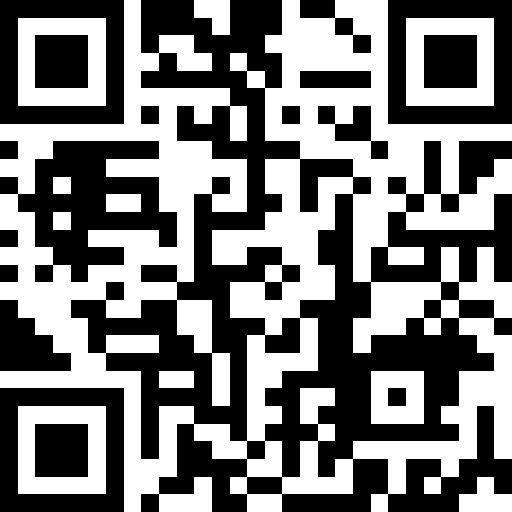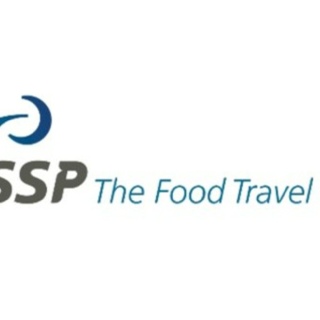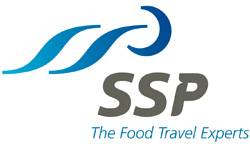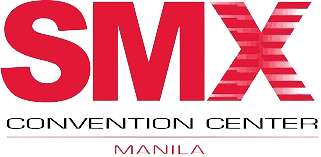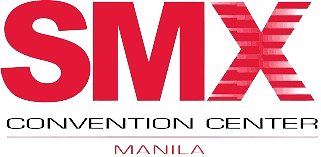Title Page
-
Establishment Name:
-
All food is stored outside the temperature danger zon
-
Type of Facility:
-
Physical Address:
-
Person in Charge:
-
Inspection Time In:
-
Date:
-
Person Completing Form:
Supervision
-
Person in charge present, demonstrates knowledge, and performs duties?
-
Does the establishment have a Certified NA Food Protection Manager?
-
Do all employees have documented food safety certifications as required by the local health department?
-
Is proper signage posted (no smoking act, first aid, restaurant permit, health department rating, nutrition info, food allergen info, etc.)?
-
Has the establishment created and properly displayed a HACCP plan?
-
Have all suspected outbreaks of foodborne illness been reported to the health department?
Employee Hygiene
-
Are employees wearing the proper uniform, including proper shoes?
-
Is a hair restraint being worn?
-
Are fingernails short, unpolished, and clean?
-
Is jewelry limited to a watch, simple earrings, and a plain ring?
-
Are employees wearing disposable gloves and changing them as required?
-
Are open sores, cuts, or splints and bandages on hands completely covered while handling food?
-
Are hands washed thoroughly using proper hand-washing procedures (soap and warm water for at least 20 seconds) at critical points (before starting work, immediately after using the washroom, and any time needed to prevent cross-contamination)?
-
Are wash hand basins used for hand washing only (separate from the food preparation sink)?
-
Are aprons worn when cooking but removed when leaving the prep area?
-
Is smoking observed only in designated areas away from preparation, service, storage, and warewashing areas?
-
Are eating, drinking, or chewing gum observed only in designated areas away from work areas?
-
Do employees take appropriate action when coughing or sneezing?
-
Are disposable tissues used and properly disposed of when coughing or blowing the nose?
-
Are employees asked to stay home from work or assigned duties away from food when exhibiting symptoms of or testing positive for communicable diseases?
Food Preparation
-
Are employees trained on potential food hazards and how to prevent contamination?
-
Are fruits and vegetables washed before being served?
-
Are naturally occurring physical hazards (bones, seeds, etc.) removed before food is served?
-
Are utensils or gloves used in food preparation to avoid bare hand contact?
-
Are separate cutting boards and other surfaces utilized when preparing raw or allergen-inducing foods?
-
Is there protocol in place when accidents happen to prevent contamination?
-
If there is potentially contaminated food, is it thrown out and preparation restarted?
-
Is unpackaged food removed from the dining area thrown out?
-
Is food purchased from approved sources?
-
Is food free from signs of spoilage or contamination?
Food Handling
-
Are ready-to-eat foods prepared in separate clean areas?
-
Is food handled with utensils, clean gloved hands, or clean hands?
-
Are separate utensils and equipment used for ready-to-eat foods unless disinfected in a dishwasher?
-
Is the dishwasher in good working order and regularly serviced?
-
Are wrapping and packaging used for ready-to-eat food kept in the clean area?
-
Do separate staff handle ready-to-eat food or are controls being followed to ensure staff change clothing and wash hands before handling ready-to-eat food?
-
Is separate complex equipment provided for ready-to-eat food and is it located in the clean area?
-
Are staff handling food as little as possible? (e.g using tongs)
-
If color-coded equipment is provided (e.g. utensils, chopping boards), is it correctly used?
-
Are high-risk foods prepared in small batches and placed in the fridge immediately after handling/preparation?
-
Is food cooled as quickly as possible away from raw food and other sources of contamination?
-
Are vegetables/fruit/salads/ trimmed and washed thoroughly before use unless labeled as ready-to-eat?
-
Are ready-to-eat foods kept separate on display and screened from customers?
-
Are adequate clean utensils available for self service?
-
Are frozen foods defrosted safely?
-
Is Food heated to the correct temperature to remove all bacteria before being placed in the hot holding area?
-
Are controls in place to prevent contamination by chemicals/foreign bodies (e.g. glass, packaging materials, bolts, rust, and cleaning chemicals)?
-
Are staff trained on food allergy hazards?
-
Are controls being followed to ensure staff wash hands after handling raw food and before touching surfaces, such as the cash register?
-
Is a separate probe thermometer used for ready-to-eat foods and properly cleaned/disinfected before use?
-
Is food tasted using proper method?
Temperature Control
-
Cooking times and temperatures for cook chill foods
-
-
Limiting shelf life as a control measure for Listeria monocytogenes
-
Table 1 of this guideline lists recommended control measures for higher risk foods including limiting the shelf life of some foods to a maximum of 7 days from packaging.
-
Most foods that are contaminated with L. monocytogenes typically have very low levels of the organism, and some growth is required in order to produce illness, even in the susceptible populations. Risk assessment data has consistently shown that the risk of listeriosis is increased in ready-to-eat (RTE) foods which support the growth of L. monocytogenes and have extended shelf lives, and that cases of listeriosis result from high levels of L. monocytogenes (> 100 cfu/g) in the food.
-
Under European Union regulations (EC 2073/2005), a RTE food or ingredient with a shelf life of less than 5 days is considered to be unable to support the growth of L. monocytogenes. In addition, Health Canada has a revised policy on L. monocytogenes in RTE foods which include a ‘Category 2A RTE foods’. This category includes RTE refrigerated foods with a shelf-life of under 5 days. The policy states that this time period would not allow sufficient time, under reasonably foreseeable conditions of distribution, storage and use, for L. monocytogenes to grow to levels above 100 cfu/g by the end of the stated shelf-life (Health Canada, 2010).
-
The FDA/UDA risk assessment in 2003 examined several ‘what-if’ scenarios including estimating the effect of shelf life on the predicted number of listeriosis cases. The scenarios tested included maximum storage times for deli meats of 4, 7, 10, 14, 17, 21, and 28 days. Shortening the shelf life to 10 days was found to reduce the estimated number of cases in the elderly sub-population by 32.5%. Further reducing the shelf life to 7 days resulted in approximately a 60% reduction in the number of listeriosis cases from deli meats (FDA/USDA, 2003).
-
Another study by Carrasco et al. (2010) examined the effect of shortening the shelf life of RTE lettuce salads on the high-risk population of Spain, with reduction of the shelf life to 7 days resulting in a 24% reduction in predicted number of listeriosis cases. A further reduction to a 5 day shelf life resulted in a 62% reduction. Along with storage temperature and serving size, shelf life was the third most important factor in determining the number of listeriosis cases.
-
The intent of the Authority in recommending limiting the shelf life of foods that support the growth of L. monocytogenes to 7 days is to reduce the risk of listeriosis compared to product that is distributed for retail sale. For example, pre-packaged RTE deli meats may have a 6-7 week shelf life which may allow the organism to grow up to infective dose levels.
-
Are temperature log records kept for cooking, holding, and receiving food?
-
All food items are correctly labeled and dated?
-
Is food cooked to the proper temperature?
-
1. 165°F/73°C: Poultry, stuffing with meat, stuffed meat and pastas, food being reheated for hot-holding.
-
2. 155°F/68°C: Ground meat, seafood, ostrich meat, marinated meat, eggs to be hot held.
-
3. 145°F/62°C: Whole seafood, beef, pork, veal, lamb, roasts, eggs to be served soon.
-
4. 135°F/57°C: Ready-to-eat hot held foods, including fruits, vegetables, grains, legumes.
-
All food is stored outside the temperature danger zone? (Cold food is less than 5°C, hot food is greater than 60°C).
-
Is food cooled from 60°C to 5°C in 2 hours or less?
-
Food being reheated for hot holding reaches 165°F/73°C in 2 hours or less?
-
Thermometers are working and accurate? (Within 2°F/-16°C)
-
Lowest temperature required:
-
Highest temperature required:
-
Accurate temperature (calibrated):
-
Are records kept for refrigerator and freezer temperatures?
-
Refrigeration temperature is within food safe range? Refridgerators keep food at 41°F/5°C or less and freezers are set to 0°F/-17°C or less?
-
Is food properly thawed in a refrigerator, with cold running water, or in the microwave? (It’s not refrozen unless it’s been thoroughly cooked)
-
Refridgerators and freezers are kept clean?
Food Storage
-
Are deliveries appropriately stored immediately?
-
Is food stored at least six inches off the ground?
-
Are dried goods stored correctly (e.g. in a cool, dry room, off the floor) properly labeled, in covered containers?
-
Is food packaging free of dents, tears, rust, or other signs of physical wear?
-
Is outer packaging removed from ready-to-eat food before being placed in a clean area?
-
Is food wrapped or stored in containers to avoid dripping and contamination?
-
Is ready-to-eat food stored above/separate from raw food in the fridges and freezers?
-
All food (including containers) are labeled with the food name and delivery date? Use-by dates are clearly marked according to the date of the ingredient that will expire first.
-
Are high-risk foods date coded, codes checked daily and stock rotated?
-
Is the FIFO (First In, First Out) method of inventory being followed?
-
Perishable foods have been kept out of the danger zone—4 °C and 60 °C (40 °F to 140 °F)?
-
Check your refrigerators periodically to ensure that their internal temperature is below 4 °C/40 °F.
-
For freezers, ensure that their internal temperature is -17°C/0°F.
-
Are foods in freezers covered?
-
Are fridges and freezers defrosted regularly?
-
Are freezers working properly?
-
Chemicals and food are separated?
Cleaning & Sanitation
-
Are all surfaces smooth, easily cleanable, and frequently washed?
-
Is all equipment kept clean, in proper working order, and meeting standards e.g. ANSI?
-
Are eating utensils properly washed after each use using a three-compartment sink or commercial dishwashing machine?
-
Is the high-temp dish machine's minimum washing temperature 151°F/66°C and rinse temperature 179°F/82°C for 10 seconds?
-
Is the low-temp dish machine's minimum wash and rinse temperature between 130°F and 150°F (50°C to 66°C) with chlorine sanitizer solution at a minimum of 100ppm?
-
Is the manual sink ware washing minimum wash, rinse, and sanitizing sink water temperature 113°F/45°C? Is the sanitizing solution at the proper concentration (chlorine 100mg/L; Quat. 200mg/L; or Iodine 12.5 – 25mg/L) and soaked for 2 minutes?
-
Are pocket thermometers and sanitizer test kits readily available to verify temperatures and concentrations?
-
Are wiping cloths clean, sanitized, properly stored, and maintained?
-
Are the water temperatures accurate?
-
If heat sanitizing, are the utensils allowed to remain immersed in 170°F/76°C water for 30 seconds?
-
If using chemical sanitizer, is it at the proper dilution?
-
Is the water clean and free of grease and food particles?
-
Are utensils allowed to dry in an appropriate place before being stored?
-
Are utensils covered to protect them from dust and contaminants when stored?
-
Are chemicals and cleaning supplies kept away from food surfaces when in use?
-
Are chemicals properly labeled and stored in a separate area from food storage?
-
Is there a scheduled pest Management Service in place?
Facility Setup and Equipment
-
Does the facility contain separate hand sinks, mop sinks, and three-compartment dishwashing sinks?
-
Are wash hand basins clean and equipped with hot water, soap, and hygienic hand drying facilities?
-
Is hot water available at 100°F/37°C at hand sinks and 110°F/43°C at three-compartment sinks?
-
Is the building material around the splash area of sinks waterproof?
-
Are faucets installed at an adequate height above the sink to prevent backflow?
-
Does water drain properly in each sink, and is the plumbing in good working order, free of leaks?
-
Are sanitizer lines equipped with an anti-backflow mechanism?
-
Is adequate lighting available for food preparation and service?
-
Are light fixtures covered to prevent hazards in case of shattering?
-
Does the facility contain adequate bathrooms in working order to support maximum occupancy, and are they used solely as bathrooms (with no storage)?
-
Do bathroom stalls have self-closing, lockable doors in proper working order?
-
Are bathrooms well stocked with toilet paper, soap, and disposable hand towels or air dryers?
-
Are hand washing signs posted in the restrooms and at sanitation stations for employees?
-
Is there adequate ventilation throughout the facility?
-
Are carbon monoxide and smoke detectors properly installed throughout the establishment?
-
Does industrial equipment have adequate space underneath for cleaning or is it sealed to the ground?
-
Are employee break and eating areas located separately from food preparation areas?
-
Are there no living quarters in the food establishment?
Equipment & Utensils
-
Are food rooms and equipment in good condition and well maintained?
-
Are food rooms clean and tidy, with staff cleaning as they go, including difficult areas?
-
Are non-food contact surfaces visibly clean and in good repair?
-
Is all equipment (e.g., stoves, grills, refrigerators, tables, sinks) kept clean and well maintained?
-
Has inoperable equipment been repaired, replaced, or removed from the facility?
-
Are all food and hand contact surfaces (e.g., work surfaces, slicers, fridge handles, probe thermometers) in good condition and cleaned/disinfected regularly?
-
Are single-service utensils properly stored and dispensed?
-
Are multi-service utensils being washed and sanitized by one of the following methods:
-
Hand washed in a two or three compartment sink (wash-rinse-sanitize)?
-
Dishwashing machine warewashing (low temp rinse water) with chemical sanitizer in solution?
-
Dishwashing machine warewashing (high temp rinse water) reaching at least 179°F / 82°C for 10 seconds?
-
Have damaged or unapproved utensils been repaired or replaced?
-
Are suitable cleaning chemicals available, stored correctly, and are proper cleaning methods used?
-
Are separate cleaning cloths used in clean areas?
-
If cleaning cloths are re-used, are they laundered in a boil wash?
-
Are utensils/small equipment covered to protect them from dust and contaminants when stored?
-
Are thermometers washed and sanitized between each use?
-
Is the can opener clean to sight and touch?
-
Are drawers and racks clean?
Waste Storage and Disposal
-
Trash containers are lined with insect and vermin-proof disposable plastic bag at all times?
-
Plastic bags are tied before being placed in outside trash bin?
-
Are bin lids closed?
-
Are kitchen garbage bins emptied frequently?
-
Are kitchen garbage bins cleaned regularly to prevent pests?
-
Is unfit food clearly labeled and stored separately from other foods?
-
Boxes and containers are removed from site?
-
Are outside premises and refuse areas are clean, sanitized, illuminated by light and well maintained?
-
Is the dumpster lid closed?
Pest Control
-
Are there any signs of pests? Regularly check for signs like droppings or bite marks on food or packaging.
-
Are there any holes in the walls or cracks? Ensure they are sealed to prevent pests from getting in. Block any possible entry points, including holes in windows or broken door sweeps.
-
Are external doors/ windows fitted with suitable flyscreens?
-
Are the doors self-closing and kept closed to avoid allowing pests in the facility? Your doors should have self-closing hinges and should never be kept open for long periods of time.
-
Are floors and food prep surfaces clean? Clean up any crumbs or spills. Also, store food in air-tight containers and keep them sealed whenever they’re not in use.
-
Is trash disposed of regularly? Remove trash frequently and never leave garbage in the building overnight. There should be no overflow of trash, and trash receptacles should be covered
-
Are the dumpsters on a level surface with good drainage at an adequate distance from the establishment? They should be frequently cleaned, kept tidy, and covered.
-
Is food property protected from the risk of contamination by pests?
-
Is the shelving for food at least 6 inches off the ground and, where possible, away from walls?
-
Are insectocutors (if provided) properly maintained?
-
Are there any live animals in the establishment area? (Besides service animals and tanked fish in the dining area)
-
Approved pesticides are used properly to avoid food contamination or creating a hazard?
-
Working with a licensed pest control company?
Check and Record Keeping
-
Are all checks properly taken and recorded?
-
Has appropriate corrective action been taken where necessary?
-
Are record sheets up-to-date, checked and verified?
-
Are equipment time/temperature combinations regularly cross-checked?
Sign-off
-
Inspection Time Out:
-
Name & Signature





